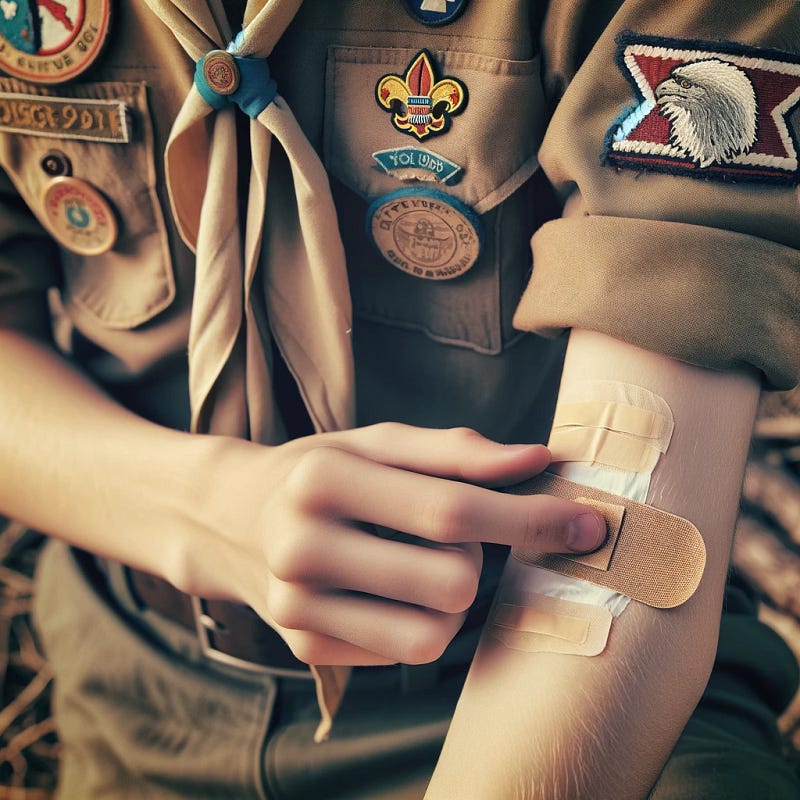Disruptive Innovations: The Small Cut that Sparked a Big Idea
Written on
The Birth of the Band-Aid
Picture this: You're in your kitchen, slicing apples when you accidentally cut yourself. In the 1920s, even minor injuries could escalate into serious issues. Fortunately, an innovative solution emerged — the Band-Aid.
The story begins with Earle Dickson, whose wife, Josephine, frequently injured herself while performing household chores. Working at Johnson & Johnson, Earle realized there had to be a more efficient way to safeguard small injuries. His idea was simple yet revolutionary: he took a piece of adhesive tape and added small squares of sterile gauze along its length. This DIY solution allowed Josephine to easily cover her cuts, paving the way for what we now know as the Band-Aid.
From DIY to Mass Production
Earle's boss, James Johnson, recognized the potential of this straightforward invention. In 1924, Johnson & Johnson began mass-producing these adhesive bandages, initially crafted by hand. At first, the product didn't fly off the shelves, as many were accustomed to treating cuts in traditional ways. However, as awareness increased, so did their popularity.
The Evolution of Design
Early Band-Aids differed significantly from those we use today; they measured 3 inches wide and 18 inches long, requiring cutting to fit. In the 1930s, the company introduced various sizes and a sterilization process, enhancing both safety and convenience. During World War II, Band-Aids were issued to soldiers, effectively introducing the product to a broader audience while assisting in treating minor battlefield injuries. After the war, veterans returned home with a newfound trust in Band-Aids, further boosting their popularity.
Initial Struggles with Sales
When Band-Aids first hit the market, sales were sluggish. Many individuals were simply not accustomed to using pre-made adhesive bandages for minor injuries. It took time for the concept to gain traction.
Handmade Beginnings
The initial Band-Aids were assembled by hand at Johnson & Johnson, making production labor-intensive. As demand grew, the company shifted towards more automated manufacturing processes.
Strategic Marketing with the Boy Scouts
As part of a clever marketing strategy, Johnson & Johnson distributed free Band-Aids to Boy Scouts in the 1920s. This initiative not only heightened product visibility but also linked it with the practical, adventurous spirit of the scouting movement.

Band-Aids in Space Missions
Band-Aids have even ventured into space! They were included in the medical kits for Apollo missions, proving their versatility and ease of use, particularly when storage space is at a premium.
The Red Cross Connection
The recognizable red cross on Band-Aid packaging is more than just a design element; it reflects Johnson & Johnson's long-standing collaboration with the Red Cross. However, the use of the red cross symbol has been contentious at times, given its association with the International Committee of the Red Cross.
A Sticky Success Story
Today, Band-Aids are a ubiquitous item found in households worldwide. They come in various sizes, shapes, and even playful designs for children. What began as a simple home remedy has become a symbol of efficient and accessible wound care.
The significance of Band-Aids extends beyond merely covering cuts; they embody a medical philosophy that emphasizes simple solutions to everyday problems. This innovation illustrates that not all advancements require complex technology; sometimes, addressing common issues with straightforward ideas can be highly effective.
The Enduring Legacy of Band-Aids
The story of Earle Dickson and the Band-Aid highlights the impact of thoughtful invention. It serves as a reminder that even the smallest ideas can significantly influence our daily lives. Next time you apply a Band-Aid, consider how this small piece of adhesive and gauze represents over a century of innovation, care, and comfort.
About Disruptive Concepts
Welcome to @Disruptive Concepts — your insight into the future of technology. Subscribe for new video content every Saturday!